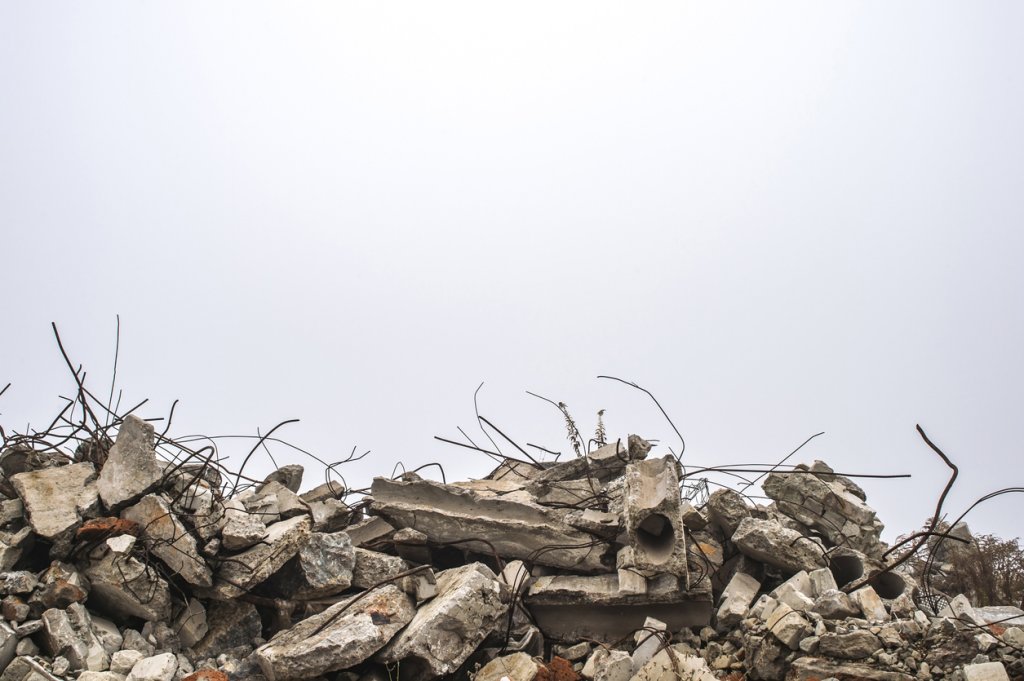OSHA's Fatal Four Hazards Safety Talk
Out of the wide range of risks construction workers face on the jobsite, OSHA has determined that there are four types of safety hazards that are responsible for the majority of worker fatalities. These hazards are referred to as the “fatal four” or the “focus four.”
The fatal four hazards include falls, electrocutions, struck-by incidents, and caught-in/between incidents. In past years the fatal four have been responsible for over 60% of all construction worker fatalities.
In this toolbox talk, we’ll review each of these fatal four hazards in more detail.
Falls
Falls are the number one cause of fatal injuries in construction. The main causes of construction site falls are unprotected edges and openings, improper scaffolding or use, and improper ladder use.
Fall protection is required by OSHA if you are working at a height of 6 feet or more or anytime someone is working over dangerous machinery and equipment. Examples of fall protection are guardrails, safety nets, and personal fall arrest systems.
When using scaffolding, ensure it complies with manufacturer and OSHA standards. Place scaffolding on stable ground and inspect it before each use. Scaffolds should be used if you are higher than 6 feet above a lower level.
If you are using a ladder on a construction site, make sure you are using the correct ladder for the job. Always use a ladder on flat, level ground. Do not overload the ladder, and make sure to face the ladder when climbing and maintain 3 points of contact at all times.
Preventing falls
Some ways to prevent falls include:
Wear and use personal fall arrest equipment
Install and maintain perimeter protection
Cover and secure floor openings and label floor opening covers
Use ladders and scaffolds safely
Electrocution
The next frequent cause of construction site fatalities is electrocution. Electrocutions occur when a person is exposed to a lethal amount of electrical energy.
An electrical hazard may lead to the following causes of death or injury:
Burns
Electrocution
Shock
Arc flash/ arc blast
Fire
Explosions
Many electrocution incidents are caused by a worker coming into contact with or failing to recognize energized sources. Other causes are improper use of extension cords or contact with overhead power lines.
Preventing electrocutions
In order to prevent electrocution and other electrical injuries, workers should:
Locate and identify utilities before starting work
Look for overhead power lines when operating any equipment
Maintain a safe distance away from power lines
Do not operate portable electric tools unless they are grounded and double insulated
Use ground fault circuit interrupters for protection.
Be alert to electrical hazards when working with ladders, scaffolds, or other platforms

Struck-by incidents
Struck-by incidents occur when a worker comes into forcible contact with a flying, falling, swinging, or rolling object.
These types of incidents include:
Struck by falling objects - These types of injuries encompass getting struck by everything from tools and materials being knocked off unprotected edges to a suspended load on a crane coming loose.
Struck by flying objects - This can include being struck by an accidental nail gun discharge, thrown tools or debris, or the tip flying off a saw blade.
Struck by swinging objects - These injuries are caused by swinging objects and usually occur when materials are being moved and something causes the load to sway. They can also happen when a worker is inside the swing radius of a heavy piece of machinery.
Struck by rolling objects - Injuries caused by rolling objects usually involve a worker being struck by a vehicle or heavy piece of machinery while it is in motion. This can also include any object that rolls, moves, or slides on the same level as the worker.
Preventing struck-by incidents
To prevent struck-by incidents, workers should do the following:
Never position yourself between moving and fixed objects
Wear high visibility clothes near equipment and vehicles
Wear personal protective equipment including hard hats and eye safety
Be alert of all work areas
Caught-in/between
Caught-in/between hazards refer to incidents when a worker is caught, stuck, or crushed from materials, equipment, or a collapsing structure.
Some examples of being caught in or in between objects are getting your hand caught in a moving part of equipment, being buried by trench cave-ins, and getting pinned between a wall and a piece of heavy equipment.
These accidents are similar to struck-by incidents with the main difference being that these accidents are a result of crushing injuries, not the initial impact.
Preventing caught-in/between incidents
Ways to prevent caught-in and caught between injuries include:
Never enter an unprotected trench or excavation 5 feet or deeper without an adequate protective system in place
Make sure trench or excavation is protected either by sloping, shoring, benching, or trench field systems
Only operate machinery with safety guards that are in place and working
Never wear loose clothing or anything that could hang down and get caught in moving parts
Never place yourself between a moving object and a wall
Never overload or overwork a piece of heavy equipment
Stay safe & remember OSHA’s “fatal four”
It is important that all workers understand the risks of the fatal four hazards and also know how to prevent them.
Before you start on a new project, evaluate your tasks and your work areas for these types of hazards. Let a supervisor know should you see anything that could cause an injury.
Find and schedule topics faster
Raken's toolbox talk app makes it easy to choose from a pre-loaded library (or upload your own), then schedule and assign topics for any project. We'd love to show you how in a demo and get you started on a free trial.